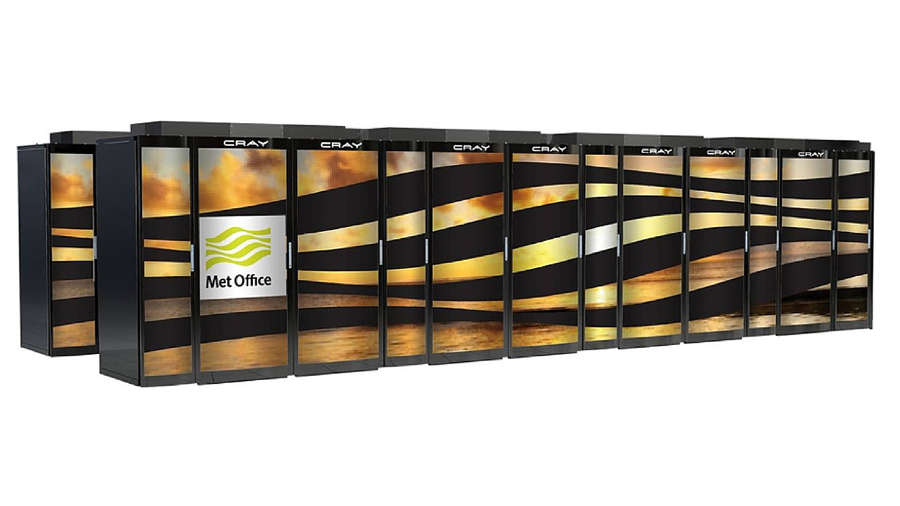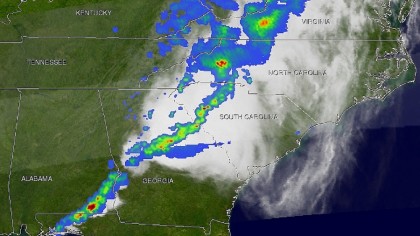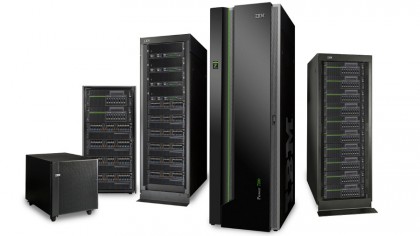How the Met Office's new supercomputer could save the UK £2 billion
A 140-tonne, £97 million Cray XC40

What sits in three buildings, weighs over 140 tonnes and can perform more than 16,000 trillion calculations a second? The Met Office has announced that it has commissioned a new Cray XC40 supercomputer that upon its completion in March 2017 is likely to be the largest in the UK and Europe, and among the world's Top 20. Capable of 23 petaflops, the Cray XC40 will straddle three sites in Exeter, including the Met Office's HQ and the Exeter Science Park.
Why does the Met Office need a supercomputer?
"We want to add new parameters and increase the resolution with which we forecast, so that we can discern finer detail within the phenomena to get a greater understanding of how specific weather events could affect the UK economy," says Dave Underwood, Deputy Director for High Performance Computing Programme at the Met Office in Exeter.
"For many years forecasting has been based on the science of numerical weather prediction where we have mathematical models that represent the physics and chemistry of the atmosphere and the hydrosphere."
Using observations from radar, satellites, soundings from space, and information from ships and aircraft, for forecasters it's all about getting as good an understanding as possible of the starting state of the Earth's atmosphere. However, even with hundreds of millions of observations coming into the Met Office each day, there are gaps in its knowledge.
"There are many places in the world for which we don't have accurate observations," says Underwood, "so there's some imprecision about the starting state." The Cray XC40 will change all that.

So this is about modelling weather systems globally?
"To deliver a good forecast for the UK which has global interests, especially in the aviation, maritime and defence sectors, we need to represent the weather structures of the whole Earth system," says Underwood. "If you only model the weather for your country you're still going to need to know about the weather round about you." With a model of the entire planet's weather system in place, all the local observations made in the UK are set in proper context.
"The XC40 promises to be a rock star," adds George K. Thiruvathukal, Member of the IEEE Computer Society, professor of Computer Science at Loyola University Chicago. "Meteorological simulations and predictions require large-scale computational resources, the more computational power you have at your disposal, the better your forecasts will be." The Met Office will thus be able to run simulations continuously to get updated forecasts as new observed data comes in.
Sign up to the TechRadar Pro newsletter to get all the top news, opinion, features and guidance your business needs to succeed!

What does the Met use now?
The Met Office currently uses an IBM POWER7, which is about a 1.2 petaflop machine. "We are operating it to the maximum of its ability in excess of 98% all day, every day doing operational weather forecasting, and climate research and forecasting," says Underwood. "We could do more science if we had more computational power available to us."
The swap to an upgraded supercomputer is largely about increasing the UK's resilience to extreme weather events, with the outlay of £97 million by the government destined to bring £2 billion in socio-economic benefits between 2016 and 2020. Underwood calls that figure conservative, saying that better forecasting will mean better mitigation of the impacts of flooding and severe weather on winter road travel, airports and food security.
The new forecasting techniques will also be used to better evaluate wind farm sites, the siting of power stations on coasts, and the specifications of expensive new anti-flooding infrastructure projects like the Thames Barrier.
Jamie is a freelance tech, travel and space journalist based in the UK. He’s been writing regularly for Techradar since it was launched in 2008 and also writes regularly for Forbes, The Telegraph, the South China Morning Post, Sky & Telescope and the Sky At Night magazine as well as other Future titles T3, Digital Camera World, All About Space and Space.com. He also edits two of his own websites, TravGear.com and WhenIsTheNextEclipse.com that reflect his obsession with travel gear and solar eclipse travel. He is the author of A Stargazing Program For Beginners (Springer, 2015),
